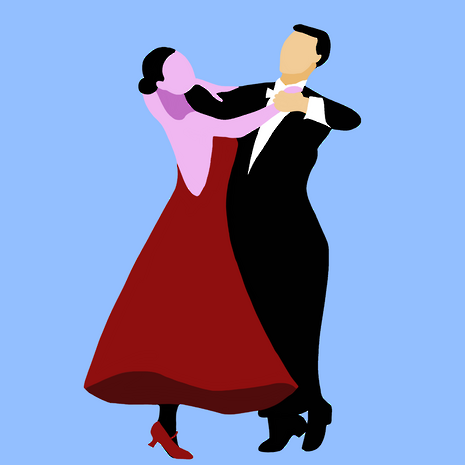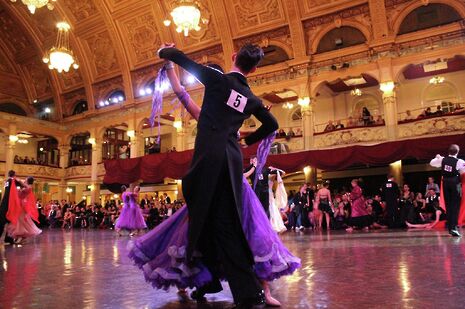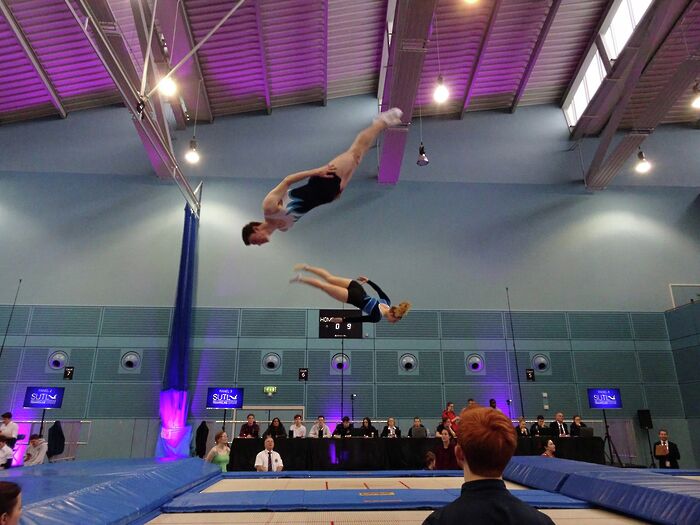New to a Blue: Cambridge University Dancesport Team are waltzing onwards
Marcus McCabe discusses the competitive side of dance with Maria Ouvarova

A study conducted by professors at the University of Western in Australia found that the average heart-rate and energy expenditure in ballroom dancers was significantly higher than the boundary used to classify exercise as “extremely heavy”. However, while the elite-levels of physical fitness required to be a professional dancer have been better documented in recent years, dance is typically regarded as more of an art than a sport. Aesthetic qualities like flexibility and precision of body movement are valued as the most important factors in creating a captivating spectacle on stage.
However, Dancesport delivers both beauty in motion and a competitive edge that only sport can supply. The Cambridge University Dancesport Team is a thriving dance club but it is also an incredibly accomplished, Full-Blue, sports club. We caught up with CUDT publicity officer and avid dancer Maria Ouvarova to learn more.
Described by Ouvarova as “the competitive branch of Ballroom and Latin dancing”, Dancesport in its most germinal form originates from early-20th-century France; French entrepreneur and dance enthusiast Camille de Rhynal held competitions for the local group of dancers, giving what was already an established social hub of seasoned dancers an added flourish of excitement. And by 1936, the first world championship was being held in Germany with couples from 15 different countries involved. Today, of course, competitive dance shows like Strictly Come Dancing grip nearly ten million weekly viewers nationwide.
“We are a huge team taking around 100 people to compete at Nationals. We have a huge range of subject areas and ages. We have students at all degree levels so it’s a really great place to meet people you wouldn’t otherwise”
But the sport was only recently given the name Dancesport, Ouvarova explained. The step was taken “to help competitive ballroom dancing gain Olympic recognition. The World Dancesport Federation (WDSF), founded in 1957, is the international governing body of Dancesport and has been recognised by the International Olympic Committee. However, it is not yet an Olympic sport!” No doubt this will only be a matter of time.
Like many members of the team, Ouvarova had never danced as part of a contest before arriving at Cambridge; she told Varsity, “I have always loved dancing and tried many styles throughout my life. However, previously I had only performed dance on a stage whereas with Dancesport the competitions are the main driver.”

This means that there is a relatively level playing field (dancing stage) when people join: “We recruit many beginners (around 100!) every year and this includes people who have never danced before. I think CUDT is particularly appealing to newcomers as well as more experienced dancers thanks to our extensive network of professional coaches who were once dancers as students at Cambridge themselves!”
One particularly novel way that novice members of the club are introduced is through Dancesport cuppers. “Yes, we have a Cuppers tournament – it’s a fun event because we enforce the rule that an experienced dancer must partner with a beginner or someone who has never danced Ballroom or Latin before,” Ouvarova described, making for a relaxed and instructive atmosphere.
New members are swiftly hooked and the team maintains a high membership count every year, with many of those members directly involved with university competitions. “We are a huge team taking around 100 people to compete at Nationals. We have a huge range of subject areas and ages. We have students at all degree levels so it’s a really great place to meet people you wouldn’t otherwise,” Maria reported.
Despite boasting so many enthusiastic members, training sessions are a tight-knit and intimate affair. “We have a mixture of dance classes, private lessons and team trainings. The team training is integral to our ethos and success. We compete individually in our partnerships against those at other universities, but we also compete in teams and it is this match that is most important to us – and it is in this event that we have held number 1 position for in the last 5 consecutive years at Nationals. Therefore, we train as a team and we compete as a team - whether we are on the dancefloor or cheering on from the side-lines to make sure those dancing feet don’t stop!”
Impressive stuff, but the team’s achievements don’t stop there. Competitive dancing has been going on in Cambridge for over 40 years now and in recent years the university team has been at the top of the DanceSport game. Not only were they National Champions for the past five consecutive years, but in 2017 they travelled to China and won first place at the Beijing Academy Team match.
And, arguably just as important, they also win consistently in the annual varsity match. In reflection of this success, the sport has been granted full blue status for the 32 members of the Blues team – “as of very recently and we are very happy about it,” Maria gleefully told us.
So, if readers want to learn to untie their two left feet, or else to keep in step with the rhythms of a lifelong passion for dance while achieving coveted Blues status in the process, DanceSport could be the perfect sport for you. Maria Ouvarova recommends coming to a trial or “drop us an email if you’ve never danced before but would like to join our Beginners’ Classes.”
 News / SU reluctantly registers controversial women’s soc18 December 2025
News / SU reluctantly registers controversial women’s soc18 December 2025 Features / Should I stay or should I go? Cambridge students and alumni reflect on how their memories stay with them15 December 2025
Features / Should I stay or should I go? Cambridge students and alumni reflect on how their memories stay with them15 December 2025 News / Dons warn PM about Vet School closure16 December 2025
News / Dons warn PM about Vet School closure16 December 2025 News / Cambridge study finds students learn better with notes than AI13 December 2025
News / Cambridge study finds students learn better with notes than AI13 December 2025 News / Uni registers controversial new women’s society28 November 2025
News / Uni registers controversial new women’s society28 November 2025










